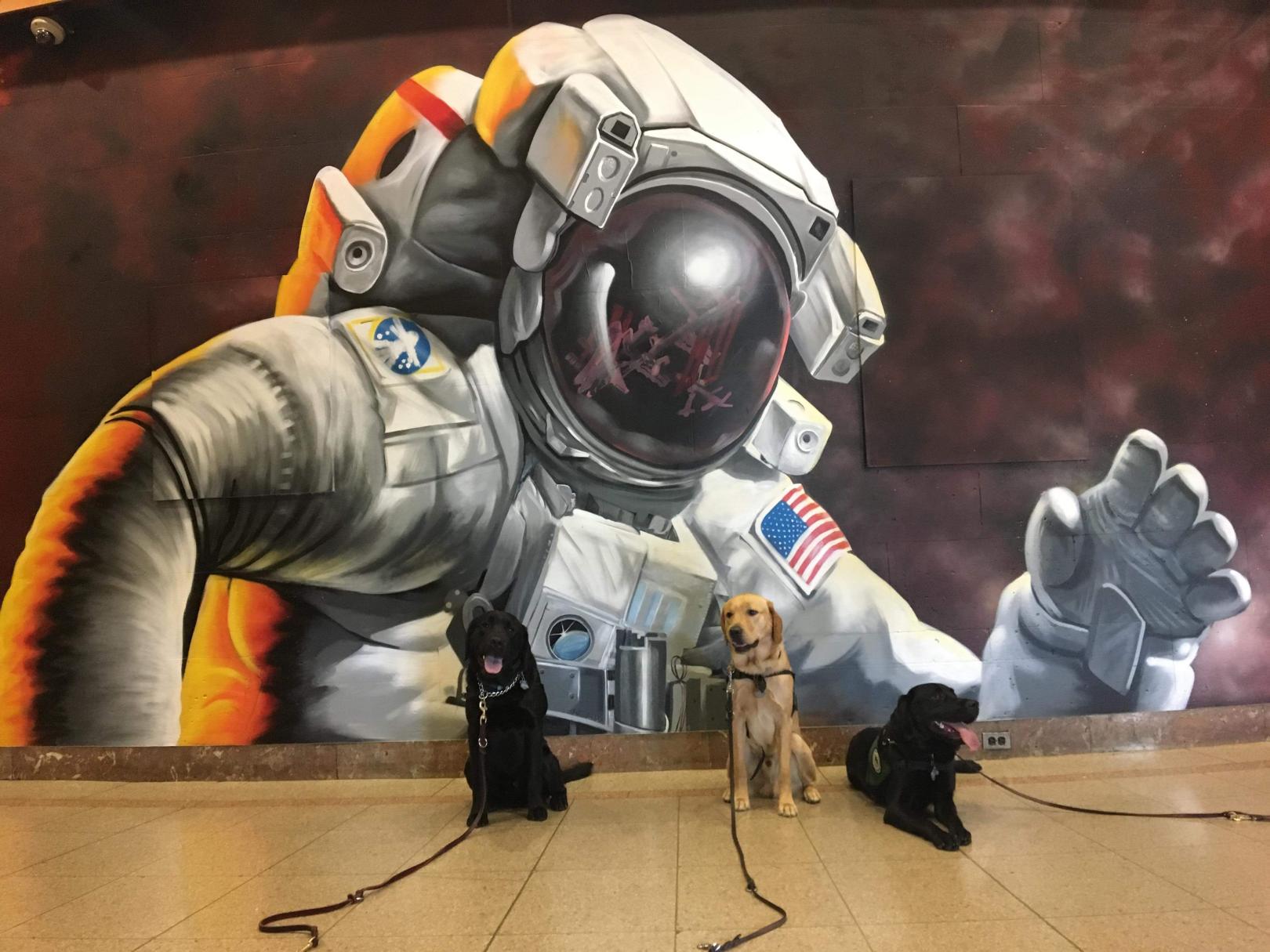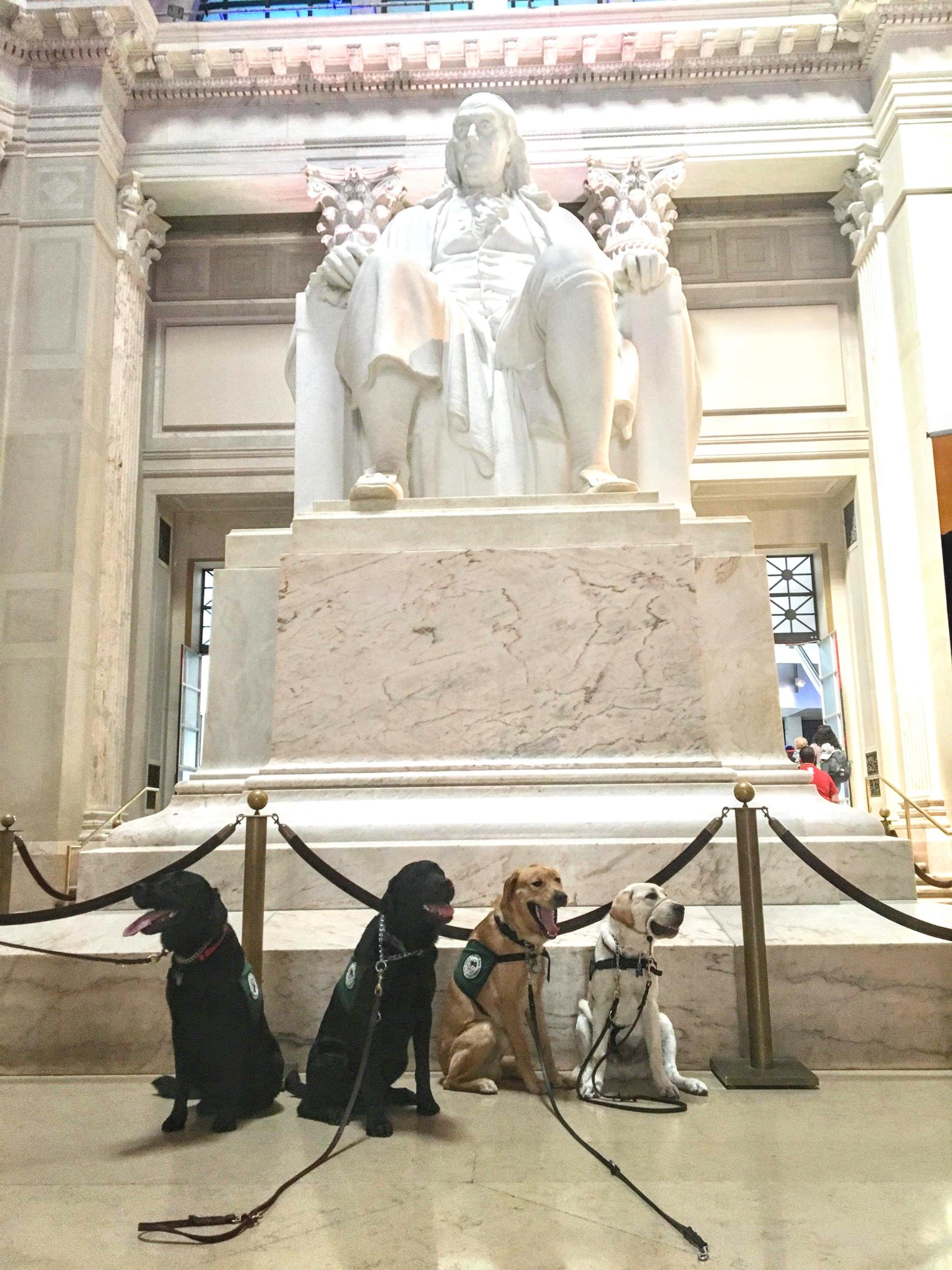
Date:
For those of you that visit the Franklin Institute on a regular basis, I am one of the many Volunteer Science Presenters that you will meet and talk with.
BUT, when you meet me at other times, usually I have a leash in my hand and am with a puppy. This is not just any puppy -- it is a Seeing Eye® puppy. My wife and I are volunteer puppy raisers for the oldest guide dog school in the United States. The Seeing Eye® is a non-profit organization with the mission of enhancing the independence, dignity and self-confidence of people who are blind or visually impaired through the use of specially trained Seeing Eye® dogs. In the past 91 years, the Seeing Eye® has matched over 17,000 teams of specially trained dogs and their human companions.
For the past 2 years I have had the pleasure of being surrounded by some amazing dogs: German Shepherds, Golden Retrievers, Labrador Retrievers and the Golden/Lab cross -- and all ages of puppies, from 7 weeks to about 16 months. The puppy development program brings these amazing little bundles of love to their puppy raisers at 7 weeks, and at 16 months a well-exposed and experienced dog goes back to “Puppy College”. So, in the 13 months that we have our puppies, what do we do? Do the dogs receive special training? And what about the biggest question that I get: how do you give the dog up?
Let’s start at the beginning. The puppy raising program is just like any family raising their pet -- except that these are not pets. These puppies are future service dogs. We raise them with incredible amounts of love and praise, but with rules that we and the pups must follow. For example, no people food! The pups do not sleep in our bed, they are not treat-trained, and the pups walk on our left side and a little bit ahead of us (some pull is good, but not too much). When the pups are brought to their raisers, they have already started to learn to sit and stay (we call it "rest"). It is amazing to look down at your 8-week-old puppy, give the command “Ivette, sit,” and have them sit and look at you, anxious for the next command to be given. On any day of the week, you might meet us (Puppy wearing their Puppy Scarf or Vest), at a store, a museum, at the library, on the subway, going up and down stairs and using elevators. These are some of the skills and experiences that we provide the puppy with. The hard one is going to a restaurant, and having the pup lie under the table just waiting there for us. My friends and others we meet have asked about giving the pup back after loving it and bonding. The answer I give is that the dog has a higher calling than being with me.

Something about service dogs that people need to remember: the dog is working, please observe them, but, let them work. People have a tendency to overwhelm the working dog. The dogs are trained to ignore distractions, but some people are insistent. The Seeing Eye® dog in particular is with a visually-impaired partner, so don’t come up and try and pet a guide dog in harness.
The Franklin Institute is one of our favorite places to bring our puppy. Firstly, the staff is always excited to see the puppy. Secondly, the museum offers so many different experiences for the dog’s sensory memory bank. Let me just name a few: people, stairs, noises, elevators, the Giant Heart, the Baldwin 60000 train, and all of us!
If you want more information about the Seeing Eye and/or its puppy-raising program, please visit www.seeingeye.org.

